Axolotls are sought after by scientists for their powers of regeneration, dished up as deep-fried delicacies and prized as pets. As a result, axolotls are ubiquitous in captivity but vanishingly rare in the wild. Their inclusion in the Minecraft computer game has seen their popularity soar in recent months – they are reportedly now the second-most sought-after pet in the US, ahead of cats, and demand is rocketing in the UK and elsewhere.
But what is an axolotl? Why are they so fascinating? And is keeping an axolotl as a pet a good idea?
What is an axolotl?
Axolotls are amphibians from Mexico, where they are native to an increasingly small number of channels and lakes. When discussing ‘the’ axolotl, we generally refer to A. mexicanum, a once-thriving species of salamander now clinging on in Mexico City’s Xochimilco canals. They are neotenous, which means that they retain their juvenile characteristics into adulthood.
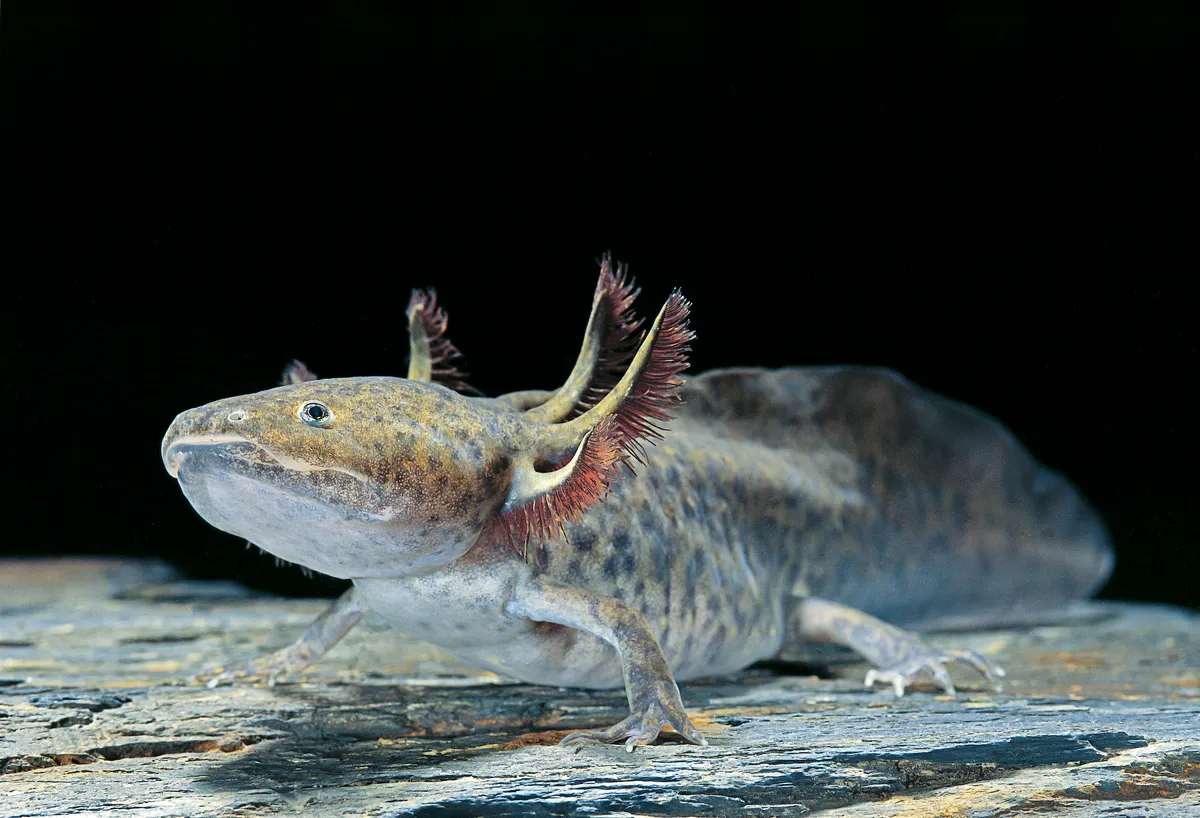
Where do axolotls come from?
Axolotls are endemic to Mexico. They originally inhabited lakes and wetlands in the Mexican Central Valley, including Lakes Xochimilco and Chalco. However, they have largely disappeared from their historical range, and are now only known from three sites in the southern part of Mexico City in central Mexico – the canals at Xochimilco, Chalco lake and Chapultepec Lake.
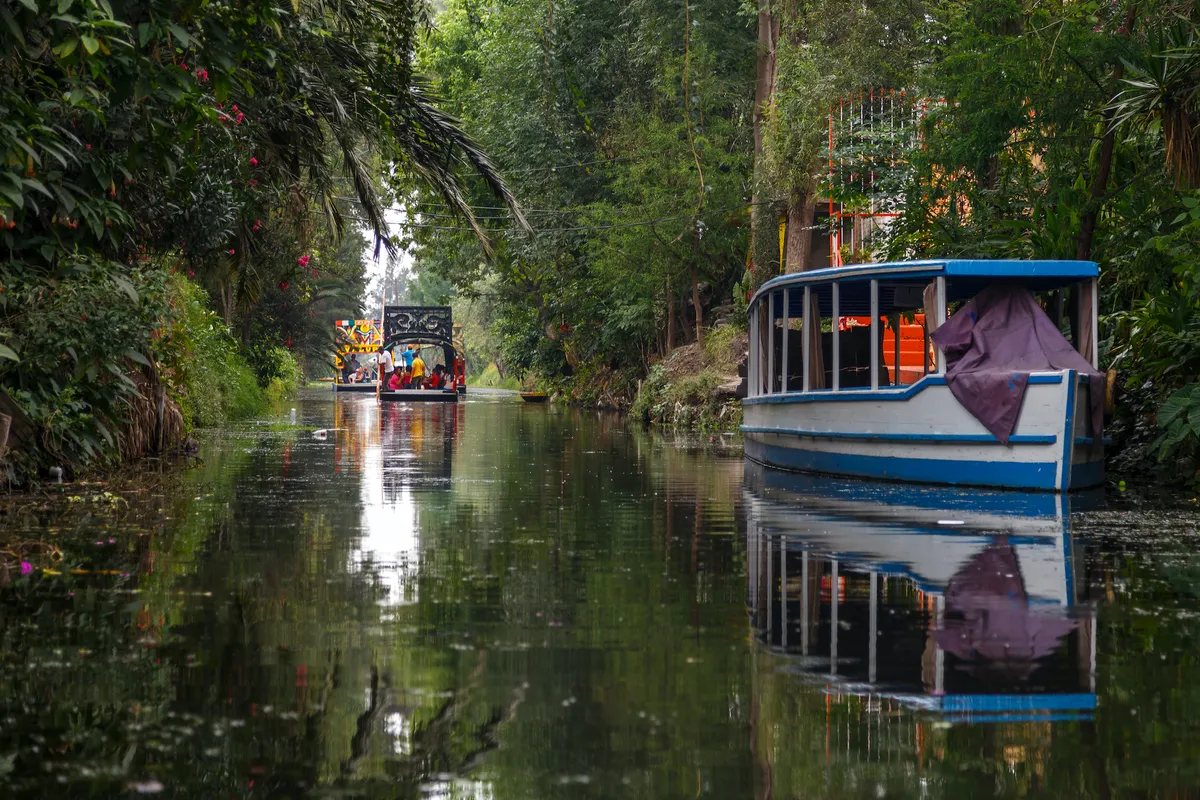
What do axolotls look like?
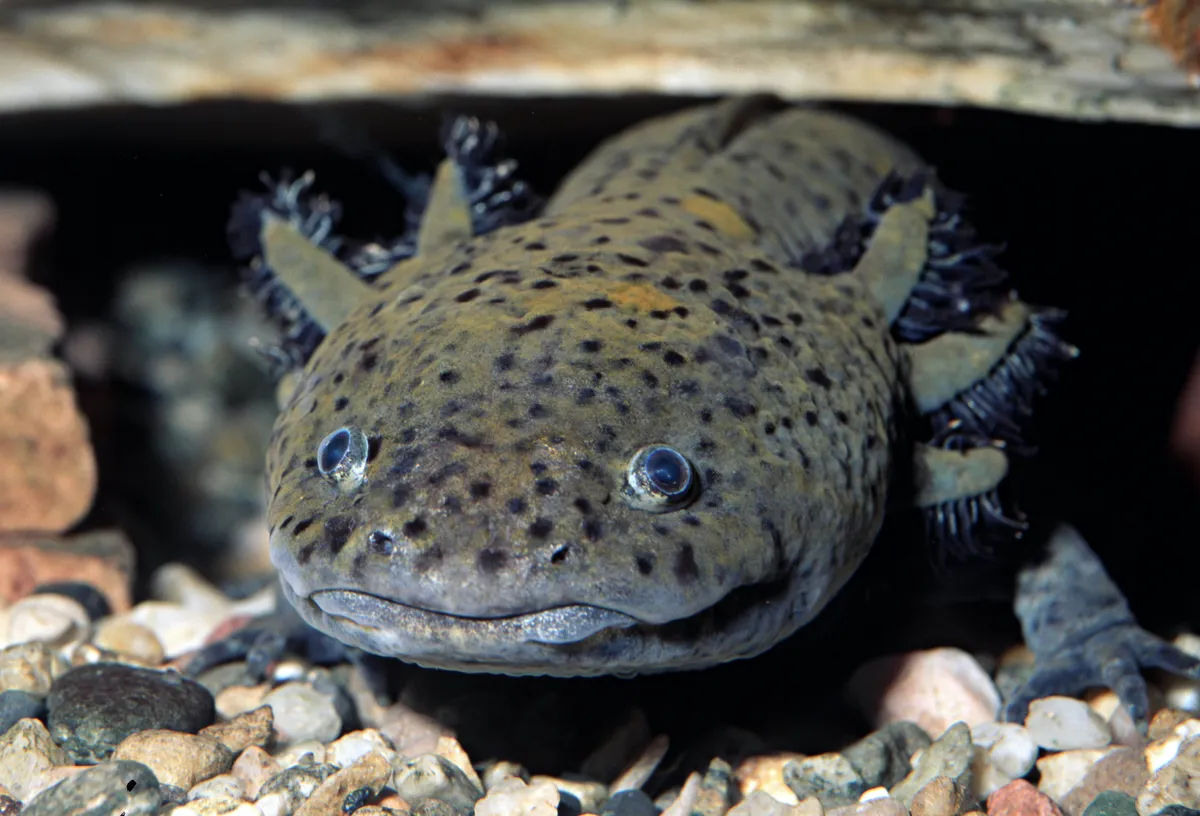
Although pet axolotls are generally white or pale pink in appearance, in the wild they are actually dark coloured – brownish-grey, with green or golden mottling.
Chris Lewis, Captivity Research Officer at the charity Born Free, explains : "Axolotls which are commonly featured in the media and kept as pets have translucent white skin and pink gills, but wild populations are naturally dark brown. These white morphs, known as leucistic axolotls, would be particularly unlikely to survive in the wild as their colouration would make them easily visible to predators." They can lighten or darken their skin colour for camouflage.
Steve Allain, of the British Herpetological Society (BHS), says: "Albino axolotls are actually hybrids with the tiger salamander (A. tigrinum), as the albino gene, as far as we can tell, was not present naturally in axolotl populations. Other 'morphs' have also been created by hybridising axolotls with other Ambystoma species, in order for them to gain the required genes."
Axolotls have wide heads, short limbs and three pairs of feathery external gills. They can grow to around 45cm (18in), and can move at a lightning speed of up to 10mph (15kph).
Are axolotls threatened?
The IUCN Red List of Threatened Species lists the axolotl as Critically Endangered. If the threats of fishing, pollution and habitat loss weren’t enough, environmental factors are also pushing axolotls to the brink. In Xochimilco, A. mexicanum is outrivalled by non-native carp and tilapia, introduced in the 1970s to create fisheries.
Some scientists think axolotls may already be extinct in the wild, or that they are very nearly extinct. “The axolotl is a complete conservation paradox,” says Richard Griffiths, of the University of Kent. “Because it’s probably the most widely distributed amphibian around the world in pet shops and labs, and yet it’s almost extinct in the wild.”
How do you pronounce axolotl?
Axolotl is pronounce 'ak·suh·lo·tl'. The word owes its origins to the Aztecs – the Mesoamerican civilisation dominant in central Mexico from the 14th century until the Spanish conquest.
In Aztec mythology, Xolotl was the name of the god of fire and lightning – and of monsters. To save himself from being sacrificed, Xolotl is said to have disguised himself as a salamander. The axolotl is named for him.
Why is the axolotl known as the amphibian Peter Pan?
A newborn axolotl resembles a transparent tadpole, with distinct external gills. Legs start to develop after a few weeks; by 18 months it will be fully grown. They are famously neotenic: they never undergo metamorphosis, remaining in larval form for life. As they age, they simply grow larger, like amphibious Peter Pans.
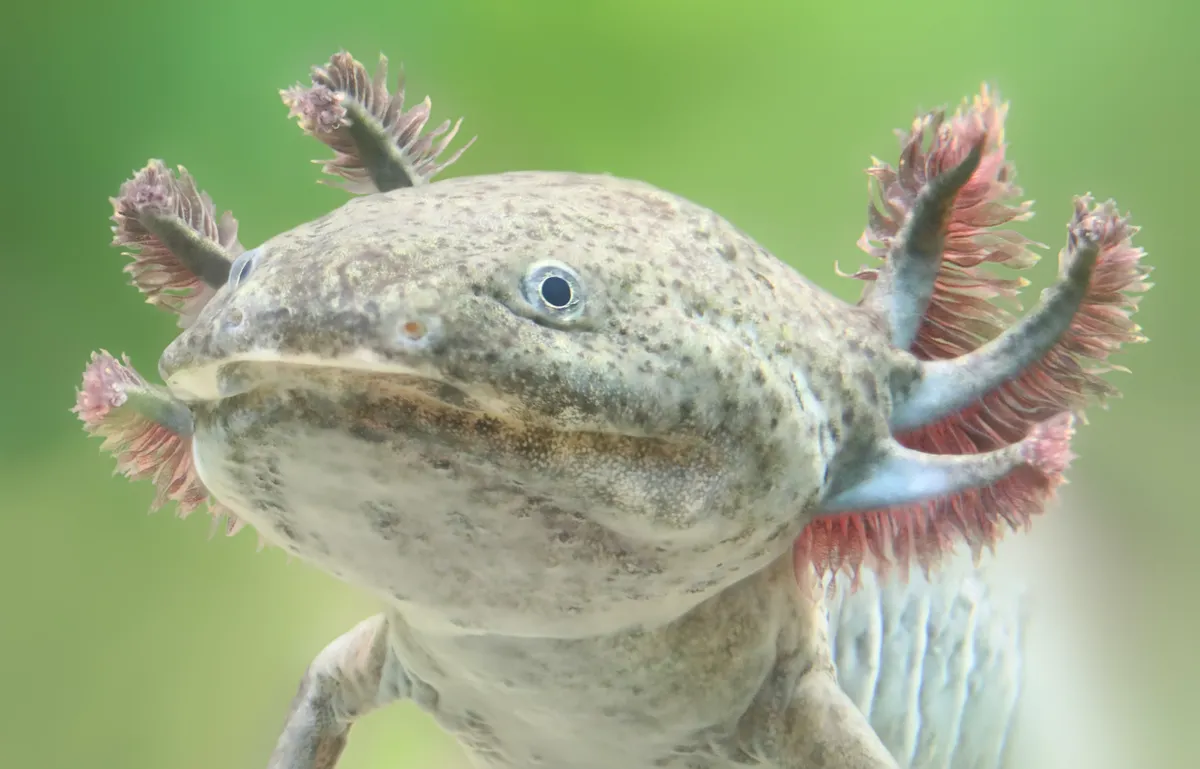
Remaining in larval form may be seen as an evolutionary handicap for neotenic axolotls, as they are unable to live on land and thus colonise new habitats. However, these animals thrived in their watery worlds before man, feeding on small prey such as worms and crustaceans, and creating shelters of stones or vegetation on the beds of lakes and streams.
Why do axolotls have gills?
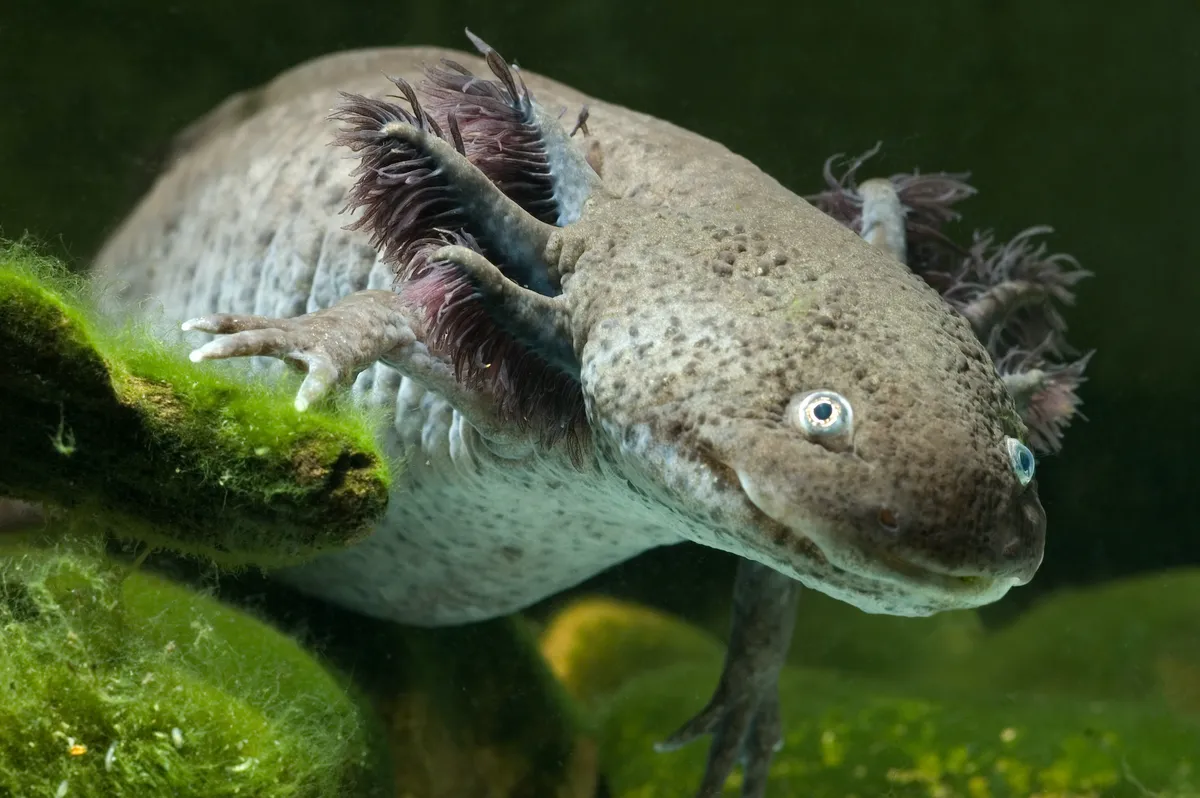
The axolotl’s famously feathery gills are not just for show – they are used for breathing and excreting metabolic waste. Usually, salamanders lose their gills during metamorphosis, but axolotls retain theirs for life. Axolotls also have rudimentary lungs, and occasionally surface to take a gulp of air.
Can axolotls really grow new legs and arms?
Spectacular powers of regeneration mean the axolotl is a permanent resident in labs across the globe. Regeneration of limbs is not an uncommon trait in amphibians, but the axolotl is the master, able to rebuild not only its limbs, but also its brain, spinal cord and heart. Scientists hope to harness this ability to apply to human medicine.
Axolotl research is progressing rapidly. A team of scientists has sequenced A. mexicanum’s entire genome – the largest ever to be decoded. This knowledge will be a powerful tool in future studies of regeneration.
Do people eat axolotls?
Axolotls were a source of protein for ancient Mexicans. Even today, these salamanders are still consumed in many areas on the supposition that they will protect against respiratory and other diseases. No scientific proof exists for such claims.
Do axolotls make good pets?
With their quirky features and ‘smiling’ faces, axolotls are sought after by aquarists across the globe. Along the dimly lit ranks of Mercado Mixhuca, Mexico City’s bustling market, axolotls and other rare species hang bagged up for sale. Many will have been illegally taken from the wild.
Although axolotls are currently massively in demand thanks to Minecraft, they’re not actually very exciting pets. Steve Allain from the British Herpetological Society says it's important for people to research any pet before buying: "Axolotls can be suitable pets but you need to know what you're doing, and not purchase them spontaneously without reading about them, or having the correct set-up etc. You don't just go and just buy a dog without knowing anything about them. The same level of care should be taken when purchasing a pet amphibian or reptile."
Conservationists also worry that owners will soon lose interest, and that unwanted axolotls will be dumped in rivers and lakes, where they could cause unknown damage as an invasive species. Steve explains: "I share the same fear as other conservationists that they may be dumped into lakes and ponds, similarly to how terrapins were in the '90s following the Teenage Mutant Ninja Turtle craze, where they may spread diseases to our native amphibians, or compete with them for resources. There have been no recorded incidents of this happening yet, but with them being so popular, it is probably only a matter of time until one is found in the wild here in the UK.
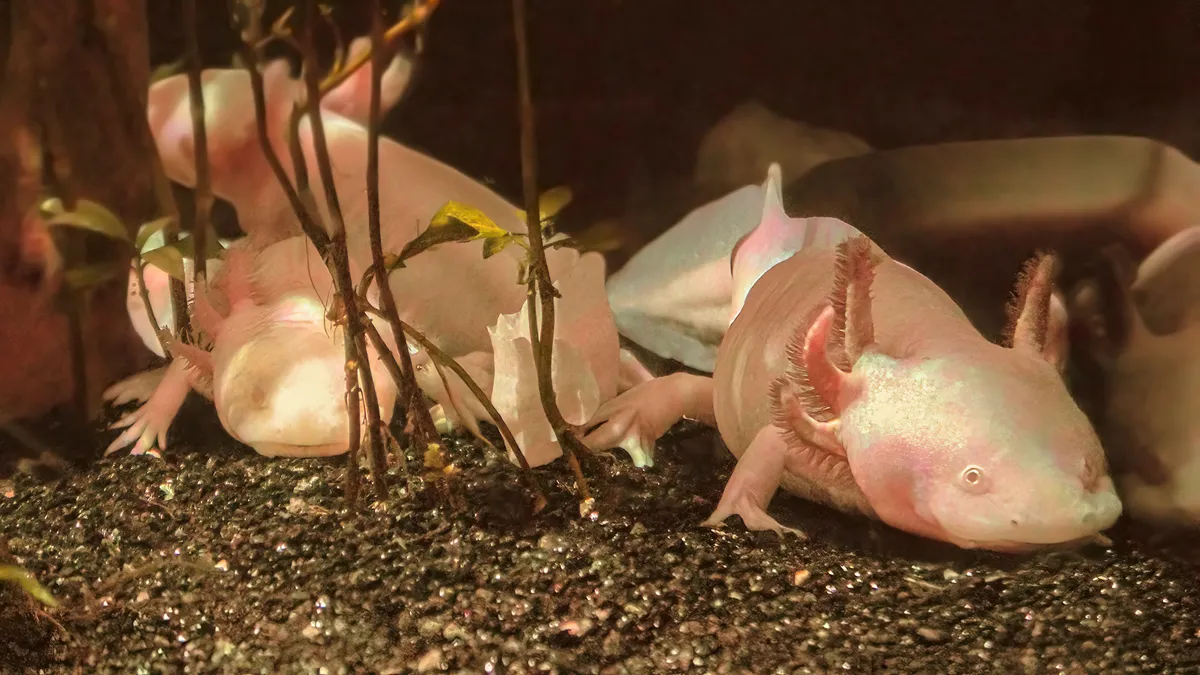
Chris Lewis, Captivity Research Officer at the charity Born Free, says: “The species has very specific requirements regarding diet, temperature, lighting and water flow. As an aquatic species they should not be handled, which may also result in owners losing interest very quickly. With a lifespan of up 15 years they are also a substantial long-term commitment and should not be bought on a whim. The risk of considerable suffering is clear for those animals who are abandoned, but there are also serious welfare concerns for those that continue to be kept as pets.
"Breeding axolotls for the international pet trade is not an effective or recognised conservation measure. Captive-bred populations are thought to be highly inbred, making them vulnerable to diseases and unsuitable for release into the wild. Captive colonies could also introduce diseases and genetic problems to the wild species.
"We would urge anyone considering buying an axolotl or any exotic pet to reconsider.”






